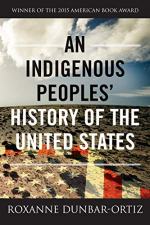
|
| Name: _________________________ | Period: ___________________ |
This test consists of 5 multiple choice questions, 5 short answer questions, and 10 short essay questions.
Multiple Choice Questions
1. What was the nickname of the U.S. naval fleet in the early 1900s?
(a) The Great American Fleet.
(b) The Great Imperial Fleet.
(c) The Great White Fleet.
(d) The Great Gray Fleet.
2. What was the name of the dance which was supposed to restore the Indigenous world to its pre-colonial state?
(a) The Dance of Sprits.
(b) The Ghost Dance.
(c) The Ancestral Dance.
(d) The Dance of Repatriation.
3. What was the name of the annual ceremony that brought the Sioux together and reinforced their national unity?
(a) The Ghost Dance.
(b) The Heavenly Dance.
(c) The Sun Dance.
(d) The Moon Dance.
4. What was the average interval between filing a claim under the Indian Claims Court and receiving an award?
(a) 5 years.
(b) 10 years.
(c) 20 years.
(d) 15 years.
5. According to the Dunbar-Ortiz, what event kickstarted the U.S. government's attempts to annex former Spanish territories in the Americas?
(a) The Lewis and Clark Expedition.
(b) The Louisiana Purchase.
(c) The Pike Expeditions.
(d) The Gold Rush.
Short Answer Questions
1. What year was the Treaty of Fort Jackson signed?
2. What was the name for land-poor settlers who wanted Lincoln to "open" Indigenous territories west of the Mississippi?
3. What year did Gran-Columbia splinter into five separate states?
4. What year did Congress pass the Homestead Act?
5. According to the Dunbar-Ortiz, why did the British withdraw their forces from the Americas in 1783?
Short Essay Questions
1. What was the environmental impact of the white settlers' destruction of the buffalo?
2. In the 1800s, the Bureau of Indian Affairs used funds allocated for Native populations. What did they do with this money?
3. Why did the U.S. extend its military power in the Caribbean and Pacific during the late 1800s?
4. Following the Civil War, why did the U.S. government frequently assign Black troops to the West?
5. In 1871, Congress created a rider to the Indian Appropriation Act. What did this rider state?
6. What was the outcome of the Indian Citizenship Act?
7. In Chapter 8, Dunbar-Ortiz responds to the popular argument that the Civil War was fought over "state's rights." What is her opinion on this issue?
8. What was Benjamin Hawkins' mission as an "Indian agent" for the U.S. government?
9. According to Dunbar-Ortiz, what role does alcohol played in colonialization?
10. What did rural white citizens hope would result from President Jackson's administration?
|
This section contains 637 words (approx. 3 pages at 300 words per page) |

|




